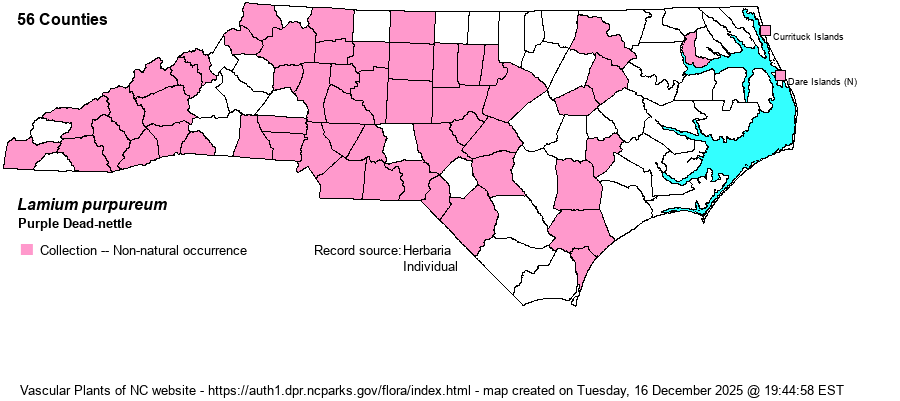| Author | L. | |
| Distribution | Mostly in the Piedmont and Mountains; scattered in the Coastal Plain.
Native of Eurasia; in N.A. more-or-less throughout but with gaps in the Midwestern Plains and the Southwest. | |
| Abundance | Frequent to common in the Piedmont and Mountains, but uncommon in the Coastal Plain. Can be rather numerous in the Coastal Plain in a few brownwater bottomlands. | |
| Habitat | Moist to mesic soils of floodplain forests, bottomlands, margins of impoundments and lakes, greenway trail, campus and lawn weed, meadows, fields, roadside ditches. As it fares well in shade and can be quite common in bottomland forests and other floodplains, it can impact native herbs, especially smaller spring ephemerals. | |
| Phenology | Flowering and fruiting late February-October. | |
| Identification | This species is similar in size to L. amplexicaule, but the flower shape is different, with those of this species having a very short tube as opposed to the long and narrow tubular look of those of L. amplexicaule. It is best told by the broadly ovate shape of the leaves, with serrated margins and pointed tips, and the overlapping, leaflike, flower bracts that point downwards. The plant is gray-green with pale hairs, with pink- to rose-colored flowers. | |
| Taxonomic Comments | | |
| Other Common Name(s) | | |
| State Rank | SE | |
| Global Rank | GNR | |
| State Status | | |
| US Status | | |
| USACE-agcp | | |
| USACE-emp | | |

